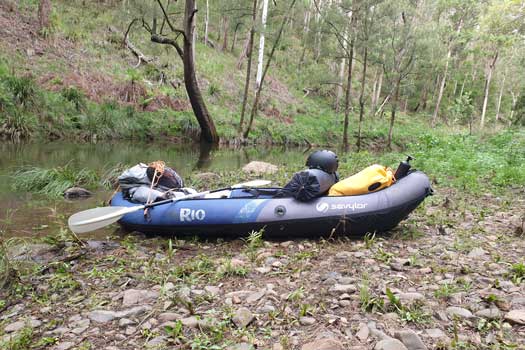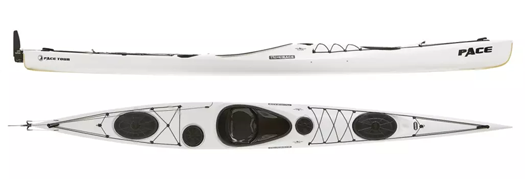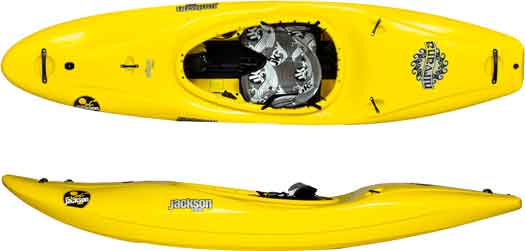Gear
Quick overview of suggested gear for padding the Murray River
What kayak is best for you?
As one goes through life, one learns that if you don’t paddle your own canoe, you don’t move.

Sea kayaks are commonly used for the main run down the Murray from Bringenbrong Bridge, but almost any boat could be used.
The requirements for the upper Murray are very different and you will struggle taking a single boat down the entire length of the Murray. Those kayakers doing the entire trip from source to sea will use two or three boats for the trip. A raft / packraft is the most common way to tackle the section above Tom Groggin, either a raft or whitewater kayak down through the gorge and a sea kayak for the bottom section.
Don't rush out and buy a kayak. Consider joining your local paddling club to give you the opportunity to try out a number of different boats and to find the one that you are most comfortable in. Renting or trial days at your local kayak shop could provide alternative ways to try out different boats.
For a guide to the different types of kayaks can be found here or for an inside look at my decision making process when selecting a kayak for various trips around the country click here.

If you are going for speed and you have a support crew, the boat of choice would be a racing kayak like a Surfski or K1. Support is one of the critical things here as you will not be able to carry much food nor gear in these boats!
The current record was set using a K1 in 1993 where David Armytage and his crew jumped at the chance to paddle the 1993 flood and finished the journey from Bringenbrong Bridge to Goolwa in an impressive 16 days and 7 hours!
This was recently broken by Dave Alley in 14 days, 23 hours, and 33 minutes from Bringenbrong Bridge to Wellington, bypassing Lake Alexandrina. A 12 hr penalty for bypassing the lake gives him the record, although sleep (or lack of) wasn't factored into this penalty time.

Most of us will fall into this category, challenging ourselves to tackle the mighty Murray. Since the biggest gap without towns is 264 km, most paddlers will choose a kayak that has ample storage for food, water and camping gear. This really pushes people towards Sea Kayaks or Canadian Canoes. It would be possible to use recreational kayaks / canoes, even a SoT with careful planning, practice trips and maybe some food drops!
The fastest and most expensive option would be a high performance touring sea kayak like the locally made Mirage 582 or imported kayaks like the Epic 18X Sport or Tiderace Pace 17. These can hold around 175 kg plus (paddler and gear), which is more than enough for the trip. These boats will be made from fiberglass (heaviest and cheapest), Kevlar or carbon (lightest and most expensive).
Take care of a composite boat in low flows above Lake Hume and consider taking a repair kit.

Plastic sea kayaks are another option and are roughly half the price of the composite kayaks. While they can be 1-3 kph slower than the glass kayaks, they are tougher and generally more stable. These characteristics could make them a better choice for beginner paddlers.
Plastic crossover kayaks are an option but they have considerably less carrying capacity that would make planning the trip much more difficult. They tend to have a skeg rather than rudder.
Canadian canoe would make for a rather relaxed journey down the Murray, especially those contemplating it with young children and lots of gear. These are definitely not the fastest and require more careful planning to ensure you have enough supplies between towns / pickup points.
I would not recommend rafts nor inflatable kayaks for the lower Murray. The river is wide and exposed to the wind that would make paddling a light inflatable boat extremely slow and difficult. SoT would also get blown around a lot.

The upper section requires something that can handle whitewater:
With support, moderate flow and experience in whitewater, you will be likely best to use a river runner or a creek boat. Without support, you will likely need to carry some gear and that will probably push many to look at packraft options for the upper section if you have to walk it in. Rafts are also the better option for those without much whitewater experience.
Above Tom Groggin, there are a small number of Grade II/II+ rapids, a number of deep pools and lots of shallow stretches with either gravel or small rocks. Being so remote and with potentially very cold water, I would strongly recommend avoiding cheap rafts, pool toys, lilos or pack surfing. I do not know if anyone has died doing this section, don't aim to be the first!
©2026 Alan Davison // Credit // Disclaimer
I had planned to use my fiberglass Mirage 580 for the lower Murray. However I had to make the choice of using my plastic Prijon Kodiak that I had with me rather than making a 2 to 3 day return trip to Queensland to swap boats. I figured an extra six days of paddling was better than a three day drive!
In hindsight, a 3 day drive would have made the final section much more pleasant and it would have been worth it. 😉